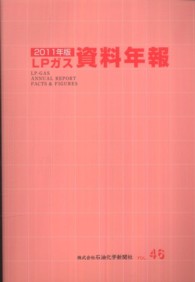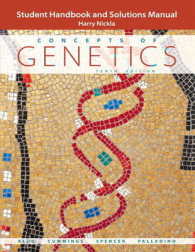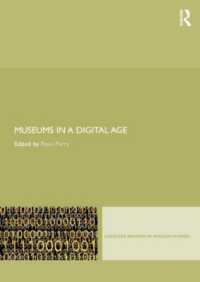- ホーム
- > 洋書
- > 英文書
- > Literary Criticism
Full Description
Flat Aesthetics seeks to secure a more granular and ontologically demotic handle on the contemporary in American literature. While contemporaneity can be viewed as "our" period, Christian Moraru approaches the contemporary as some-thing made by things themselves. The making of the contemporary is variously restaged by the body of fictional prose under scrutiny here. Thus, this corpus itself participates in the making of contemporaneity.
In dialogue with object-oriented ontology and various new materialisms, Moraru contends that the contemporary does not preexist objects or the novels featuring them; it is not their background but an outcome of things' self-presentation. As objects, beings, or existents present themselves in the present, in our "now," they foster thing-configurations that together compose the form of, and essentially make, the contemporary — the present's cultural-material signature, as Moraru calls it.
To decipher this signature, Flat Aesthetics provides a cross-sectional reading of postmillennial American fiction. Discussed are solely post-2000 works by writers who have also established themselves over the past two decades or so, from Nicole Krauss, Michael Chabon, and Ben Lerner to Colson Whitehead and Emily St. John Mandel. Their output, Moraru claims, bears witness to the onset of a "flat" aesthetics in American letters after September 11, 2001. Organized into five parts, the books canvases objectual constellations of contemporaneity shaped by material dynamics of language, museality and display, spatiality, zombification and thing-rhetoric, and post-anthropocentric kinship.
Contents
Introduction: The New Aesthetic, the Contemporary, and Compositional Criticism
Flat Aesthetics: Things, Forms, and Exchange Regimes
Flat Reading: Object Tangles and Criticism without "Us"
Contemporaneity, Periodization, and the Signature of the Present
Part I. Language
cap'n crunch, planet of the apes, the kingfishers: Ben Lerner and the Uselessness of Poetry
necklaces, novels, backpacks: A Post is Being Formed in Leaving the Atocha Station
bees, parrot, trains: Murder by Numbers and "the Foulest of Crimes" in The Final Solution
Part II. Display
freighters, snow globes, comics: Mandel's Museum of Civilization, or Survival Is Insufficient
photographs, instant coffee, baby octopuses: "Mere Objecthood," Messianic Readymates, and the Institute of Totaled Art in 10:04
Part III. Exit
go, dog. go! scuba diving, massage chairs: The Dog, X/It-Men, and Other Things That Go
ravann, doors, cell phones: Un-Telling, "Mocking Objects," and Hamid's Exit West
Part IV. Revenant
copula, ding, assembly: Zombies and the Body Politics
corsica, dust, skels: The Insistence of Things and the Object of Race in Whitehead's Zone One
Part V. Kinship
fish, peacock, ram: Schulz, Blecher, Foer, and Kafka's Unknown Family
hilton, suitcase, ein-sof: Forest Dark and the Machine of Jewish Literature
Conclusion: Composing the Contemporary
Notes
Bibliography
Index








